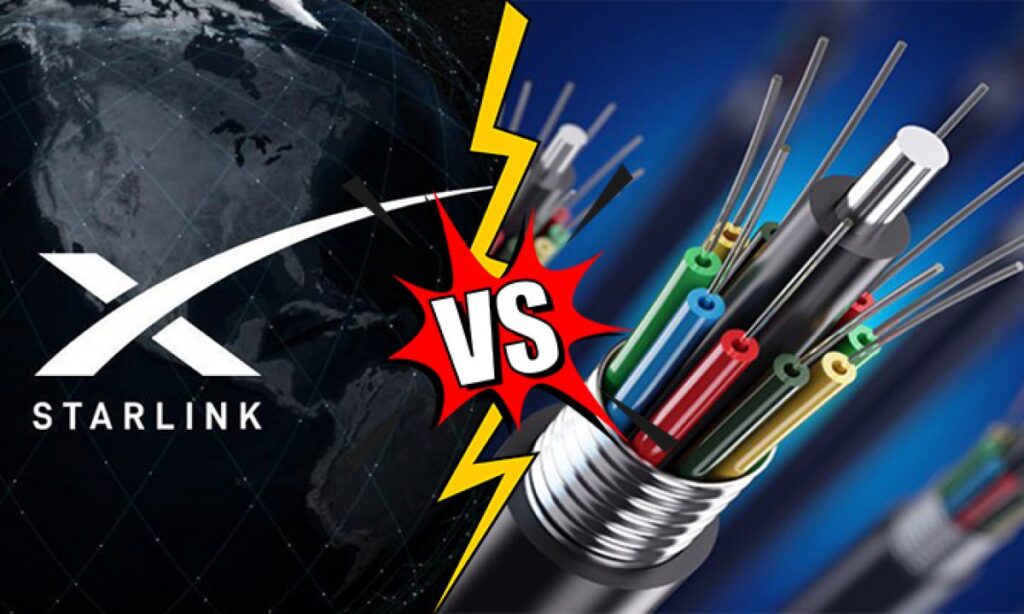For years, fiber-optic internet (like Google Fiber) was the undisputed king of speed and reliability. But now, Elon Musk’s Starlink satellite internet is shaking up the industry—offering high-speed broadband anywhere on Earth, even in remote jungles and deserts.
Is Starlink really better than fiber? Or is this just hype?
We compare them head-to-head on:
✔ Speed & Latency
✔ Availability & Coverage
✔ Price & Hidden Costs
✔ Future-Proofing
By the end, you’ll know which one wins in 2024—and whether you should switch.
1. Speed & Performance: Fiber vs. Starlink
🚀 Fiber-Optic (Google Fiber, AT&T Fiber)
-
Download Speed: 1,000 Mbps – 5,000 Mbps (5Gbps)
-
Upload Speed: 1,000 Mbps – 5,000 Mbps (symmetrical)
-
Latency: 5–15 ms (near-instant)
✅ Best for: Gamers, 4K streaming, smart homes, businesses.
🛰️ Starlink (Satellite Internet)
-
Download Speed: 50–250 Mbps (varies by location)
-
Upload Speed: 10–40 Mbps
-
Latency: 25–60 ms (improving with new satellites)
✅ Best for: Rural areas, travelers, emergency backup.
Verdict: Fiber is 10x faster—but Starlink wins where fiber doesn’t reach.
2. Availability: Who Can Get It?
| Internet Type | Coverage | Installation |
|---|---|---|
| Fiber-Optic | <30% of U.S. (mostly cities) | Professional install (1–2 hrs) |
| Starlink | 100% global (even oceans) | DIY setup (15 mins) |
-
Google Fiber is only in 20 U.S. cities after a decade.
-
Starlink already serves 2+ million users worldwide.
Winner: Starlink for rural users, Fiber for cities.
3. Price & Hidden Costs
💰 Fiber (Google Fiber, AT&T, Verizon)
-
$70–$150/month
-
No equipment fees (usually included)
-
No data caps
💸 Starlink
-
$120/month (Standard)
-
$599 upfront for dish (or $2,500 for “Business” tier)
-
Potential throttling during peak hours
Verdict: Fiber is cheaper long-term, but Starlink has no infrastructure limits.
4. Reliability & Weather Impact
-
Fiber: 99.9% uptime (buried cables = no weather issues).
-
Starlink: Heavy rain/snow can disrupt signal (but improves with newer satellites).
Biggest Complaint: Starlink users report slowdowns at night (network congestion).
5. Future-Proofing: Who Wins Long-Term?
Fiber’s Edge
-
Multi-gig speeds (10Gbps soon)
-
No latency limitations
Starlink’s Advantage
-
Mega-constellation growth (30,000+ satellites planned)
-
Mobile internet (RV, boats, planes)
Elon’s Goal: Starlink to hit 500 Mbps by 2025—but fiber will still be faster.
6. Who Should Switch to Starlink?
✅ You live in a rural area (no fiber/cable options).
✅ You travel full-time (RV, van life, boats).
✅ You need backup internet (storms knock out cable often).
Stick with Fiber If…
✅ You’re in a city (fiber is faster & cheaper).
✅ You’re a gamer/streamer (low latency matters).
Final Verdict: Is Starlink Beating Fiber?
-
For speed & price: Fiber still wins.
-
For global coverage & freedom: Starlink is revolutionary.
Bottom Line: Starlink isn’t “better” than fiber—it’s filling the gaps fiber can’t.
But with Musk’s relentless upgrades, the gap is shrinking fast.
